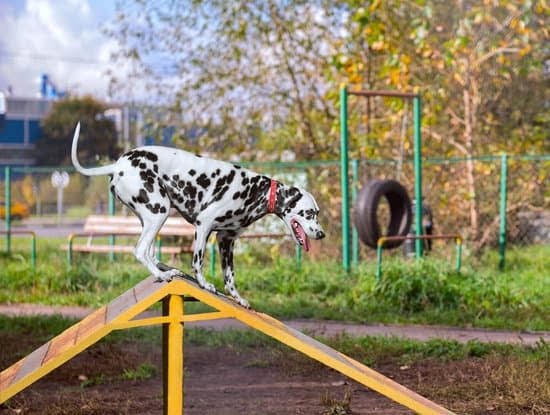How long do you have to practice dog training? Training a dog requires consistency, time, and patience. It is important to understand the learning curve for dogs and the factors that influence the training process. In this article, we will explore the time commitment for dog training, setting realistic expectations, creating a training schedule, measuring progress, overcoming challenges, and the role of patience and persistence in successfully training your dog.
Consistent dog training is crucial in establishing good behavior and obedience in your furry companion. Whether you are teaching basic commands or addressing behavioral issues, investing time and effort in training can lead to a well-behaved and well-adjusted pet. Understanding the process of how dogs learn, as well as the factors that influence their ability to learn, is essential in setting realistic expectations for their training progress.
It’s important to recognize that the time commitment for dog training can vary depending on various factors such as age, breed, and background. Additionally, creating a structured training schedule and knowing how to measure progress are key components in achieving successful outcomes. This article aims to provide insights into these aspects of dog training and offer tips for effectively navigating through the process.
Understanding the Training Process
When it comes to dog training, it’s important to understand that every dog is different and will have their own unique learning curve. Just like humans, dogs have varying levels of intelligence, attention spans, and energy levels, so the time it takes for them to learn new commands and behaviors can vary from dog to dog. It’s crucial to be patient and understanding of this process as you work with your furry companion.
To better understand the learning curve for dogs, it’s helpful to break down the training process into manageable steps. First, it’s important to establish a foundation of basic commands such as sit, stay, come, and heel. This may take some time for your dog to grasp, especially if they are unfamiliar with these commands. It’s essential to remain consistent in your training approach and practice these commands regularly.
Next, as your dog becomes more comfortable with basic commands, you can gradually introduce more advanced or specialized training based on your specific needs or goals. For example, if you are training a service or therapy dog, you may need to teach them tasks such as retrieving items or providing support during times of distress. These types of skills may require additional time and patience from both you and your dog.
Overall, the key to understanding the training process for dogs is recognizing that each step takes time and practice. Consistency is key when it comes to reinforcing good behavior and establishing a strong bond with your pet. With patience and dedication, you can help your dog navigate their learning curve and achieve success in their training journey.
Setting Realistic Expectations
When it comes to dog training, setting realistic expectations for the time commitment is crucial. Many people wonder how long they have to practice dog training before seeing results. The truth is that the time it takes to train a dog can vary depending on several factors, including the dog’s age, breed, and background. Understanding these factors can help you manage your expectations and stay committed to the training process.
First and foremost, it’s important to recognize that dog training is not a quick fix. Just like humans, dogs need time to learn new behaviors and commands. Some dogs may pick up on training more quickly than others, but it’s important to be patient and consistent in your efforts. In general, experts recommend dedicating at least 15-20 minutes of training per day, but this can vary based on the individual needs of your dog.
The age of your dog can also play a significant role in the time it takes to train them. Puppies are generally more adaptable and may learn new commands more quickly than older dogs. However, older dogs can still be trained with patience and persistence.
Additionally, a dog’s breed and background can influence their learning curve. For example, some breeds are known for their intelligence and eagerness to please, making them easier to train, while others may require more time and effort. Understanding these factors can help you set realistic goals for your dog’s training progress.
Overall, the key to successful dog training is consistency and patience. While it’s natural to want quick results, investing the time and effort into training your dog will ultimately lead to a well-behaved pet. By understanding the time commitment involved in training and being patient with the process, you can set yourself and your furry companion up for success in the long run.
Factors That Influence Training Time
When it comes to dog training, there is no one-size-fits-all answer to the question of how long it takes. The time it takes to train a dog can be influenced by several factors, including age, breed, and background. Understanding these factors can help set realistic expectations for the training process and determine the time commitment required.
Age plays a significant role in the training process. Puppies have a shorter attention span and may take longer to grasp commands compared to older dogs. It is important to be patient and consistent with young dogs as they go through the learning curve. On the other hand, older dogs may have established behaviors that require more time and effort to modify through training.
Breed is another factor that can influence how long it takes to train a dog. Different breeds have different temperaments, energy levels, and natural abilities. Some breeds are known for being highly trainable, while others may be more independent or stubborn.
Understanding your dog’s breed characteristics can help tailor your training approach to better suit their needs. Additionally, considering a dog’s background, such as whether they were a stray or previously neglected, can impact their behavior and response to training methods. Understanding these factors can give insight into how long it may take to effectively train a dog.
Creating a Training Schedule
Consistency is key when it comes to dog training. Setting a regular training schedule can help in reinforcing positive behaviors and teaching new commands effectively. But how long do you have to practice dog training each day? The answer varies depending on several factors, including the age, breed, and background of your dog.
For puppies, short but frequent sessions are recommended as they have shorter attention spans. Aim for 5-10 minutes of training multiple times a day. As your puppy grows older, you can gradually increase the duration of each session. Adult dogs, on the other hand, can handle longer training sessions that last between 15-30 minutes once or twice a day.
It’s important to keep in mind that while regularity is crucial, the quality of the training sessions is equally important. It’s better to have short but focused and productive sessions rather than long, drawn-out ones where your dog may become disinterested or overwhelmed. With consistency and patience, you’ll be able to see progress in your dog’s behavior over time.
| Age | Recommended Training Duration Per Session |
|---|---|
| Puppies | 5-10 minutes multiple times a day |
| Adult Dogs | 15-30 minutes once or twice a day |
Signs of Progress
As you continue to invest time and effort into training your dog, it’s important to understand how to measure the effectiveness of your training sessions. By keeping track of your dog’s progress, you can ensure that you are on the right track and making a positive impact on your dog’s behavior. Here are some ways to gauge the effectiveness of your dog training:
- Behavioral Changes: One of the most obvious signs of progress in dog training is seeing changes in your dog’s behavior. Whether it’s responding to commands, reducing certain undesirable behaviors, or showing increased focus during training sessions, these behavioral changes indicate that your efforts are paying off.
- Consistency in Performance: Another way to measure the effectiveness of training is by observing how consistently your dog performs the learned behaviors. If your dog can consistently follow commands or exhibit good behavior in various situations, it demonstrates that they have truly learned and internalized the training.
- Speed of Learning: Pay attention to how quickly your dog picks up new commands and behaviors. A faster learning curve indicates that your training methods are effective and engaging for your dog.
It’s important to note that each dog is unique, and their progress in training may vary based on their personality, breed, and background. Therefore, it’s essential to be patient and consistent in your approach as you work with your furry companion.
Additionally, keep in mind that measuring progress in dog training is not just about achieving specific behaviors but also about strengthening the bond between you and your dog. Observing a sense of trust, eagerness to learn, and improved communication with your pet are also valuable indicators of the effectiveness of your training efforts.
Common Roadblocks
Identifying Common Roadblocks
Training a dog can be a rewarding experience, but it also comes with its fair share of challenges. Some common roadblocks that dog owners may encounter during training include stubborn behavior, distractions, fear or anxiety, and lack of motivation. It’s important to be aware of these potential obstacles so that you can effectively address them and continue making progress in your training efforts.
Strategies for Overcoming Challenges
When faced with roadblocks in training, it’s essential to remain patient and persistent. One effective strategy for overcoming challenges is to break down the training into smaller, more manageable steps.
For example, if your dog is having difficulty learning a specific command, try breaking it down into smaller tasks and gradually increasing the difficulty as your dog improves. Additionally, using positive reinforcement techniques such as treats and praise can help motivate your dog and make the training process more enjoyable for them.
Another important strategy for overcoming roadblocks in training is to create a consistent and structured environment for practice. Minimizing distractions, establishing a routine, and providing clear communication with your dog can help address common challenges such as lack of focus or motivation. Additionally, seeking the assistance of a professional trainer or behaviorist can provide valuable insight and guidance in addressing specific roadblocks that you may encounter during the training process.
The Role of Persistence
It’s important to remember that overcoming roadblocks in dog training requires persistence and dedication. Every dog learns at their own pace, so it’s essential to remain patient and committed to the process. By staying consistent with your training efforts and being proactive in addressing challenges, you can overcome roadblocks and ultimately achieve success in training your dog.
The Role of Patience and Persistence
Training your dog requires a great deal of patience and persistence. Dogs, just like humans, have their own learning curve and may take different amounts of time to grasp certain commands or behaviors. It is important to understand that consistent training is key to successfully teaching your dog the desired behaviors.
Understanding the Learning Process
Dogs learn through repetition, consistency, and positive reinforcement. It is essential to be patient with your furry friend as they may not understand commands right away. Understanding the learning process and how dogs interpret our cues can help you adjust your training methods to effectively communicate with your pet.
Consistency Is Key
Consistency in training is crucial for success. Dogs thrive on routines, so having a regular training schedule will help them grasp commands faster. Whether you are teaching basic obedience or more advanced tricks, practicing regularly and using the same cues will reinforce what they have learned.
Persistence Pays Off
Being persistent in your dog training efforts can lead to great results. Some dogs may require more time than others to master certain behaviors, but with patience and perseverance, they can eventually get there. Remember that every dog is unique, and it’s important not to give up when faced with challenges during the training process.
By remaining patient and persistent in your approach to dog training, you can build a strong bond with your pet while also achieving the desired results. Consistent practice and positive reinforcement will go a long way in helping your furry friend become well-behaved and obedient. Ultimately, investing time and effort into proper training will lead to a happier and healthier relationship between you and your canine companion.
Conclusion
In conclusion, the journey of dog training requires a substantial investment of time and effort, but the rewards are well worth it. The process of consistent training is essential for building a strong and healthy relationship with your furry companion. Understanding the learning curve for dogs and setting realistic expectations is crucial in this process. Although the time commitment for dog training may vary depending on factors such as age, breed, and background, consistency and patience are key to success.
It is important to remember that every dog is unique, and progress may be slow at times. However, creating a training schedule and staying committed to practicing regularly will ultimately lead to positive results. Recognizing signs of progress, no matter how small, and measuring the effectiveness of your efforts can help keep you motivated along the way.
While challenges and roadblocks may arise during the training process, having patience and persistence is essential for overcoming them. Remember that every moment spent investing in your dog’s training is an investment in a better future together. So, as you embark on this journey, keep in mind that the time and effort put into dog training will not only benefit your furry friend but also strengthen the bond between you both.
Frequently Asked Questions
How Long Do I Have to Train My Dog?
The length of time to train a dog depends on various factors such as the dog’s age, breed, and individual temperament. Consistency and patience are key, so training may take several weeks or even months.
Do You Ever Stop Training Your Dog?
Training should be an ongoing process throughout your dog’s life. Even after basic obedience is established, it’s important to continue reinforcing good behaviors and introducing new commands to keep their skills sharp.
What Is Duration in Dog Training?
In dog training, duration refers to the length of time a dog is able to perform a specific behavior or command. It involves gradually increasing the time the dog can hold a stay, maintain focus, or perform an action before receiving reinforcement. Developing duration is an important aspect of training for obedience and reliability.

Welcome to the blog! I am a professional dog trainer and have been working with dogs for many years. In this blog, I will be discussing various topics related to dog training, including tips, tricks, and advice. I hope you find this information helpful and informative. Thanks for reading!





